Can you imagine walking through beautiful villages on the Camino de Santiago? On this journey, pilgrims traverse magical places, villages that they might not visit because they are off the most touristy paths of the country. In the following article, we want to showcase our selection of the most beautiful villages on the Camino de Santiago. If you decide to embark on a pilgrimage on the jacobean routes, you will discover villages that have rightfully earned their place on this list.
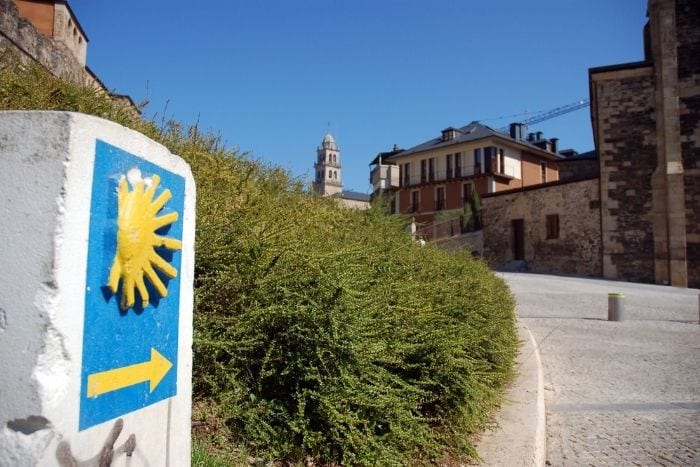
Walking through charming villages on the Camino
Before anything else, what characteristics should the beautiful villages have?
A charming village is not only beautiful but also has a mix of history, architecture, landscapes, and traditions that make it unique. These places are often rich in history and frequently the settings of legends. This is evident in their architectural richness, with buildings and streets that are like history books of art. Their value also comes from their picturesque natural surroundings. All this, combined with local culture and hospitality, makes these villages worth visiting.
Top 5 Beautiful Villages on the French Way
We start our selection with the five most beautiful villages on the French Way, the most historic and traditional route of the Camino.
Roncesvalles
Roncesvalles, located at the foot of the Pyrenees in Navarre, has been an entry point to the Iberian Peninsula from France. Home to feats, battles, and songs, it is a living memory of the Camino de Santiago. Since the Middle Ages, it has offered refuge to many pilgrims and personalities.
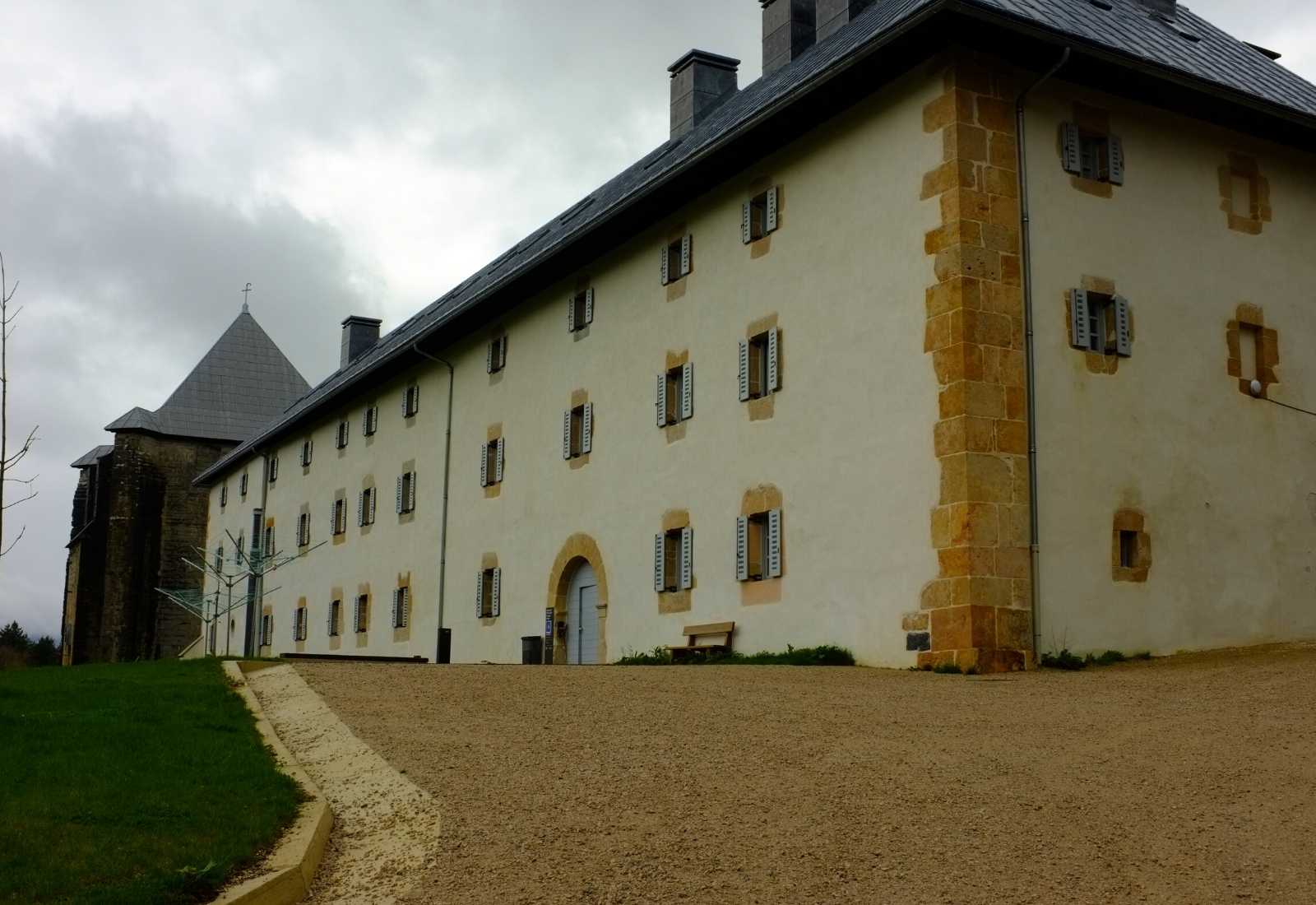
The pilgrims’ hostel in Roncesvalles has a lot of history
The Royal Collegiate Church of Santa María de Roncesvalles is the most representative building of the village. It is one of the finest Gothic constructions in Navarre. It preserves a 14th-century image of the Virgin. King Sancho VII the Strong was its promoter, intending to be buried there.
Noteworthy is the Chapel of the Holy Spirit, probably from the 12th century and the oldest building in Roncesvalles. It is Romanesque and also known as Charlemagne’s Silo. It is said that Charlemagne ordered the construction here for the burial of Roland and his men.
Roncesvalles is also in a privileged natural environment. The Irati Forest, near the village, is the second largest beech and fir forest in Europe.
Puente La Reina
Just 24 kilometers from Pamplona is the village of Puente la Reina. This cobblestone village is full of history and is an important stop on the Camino de Santiago. Founded by Alfonso I the Battler in the 12th century, Puente la Reina has a Templar origin.
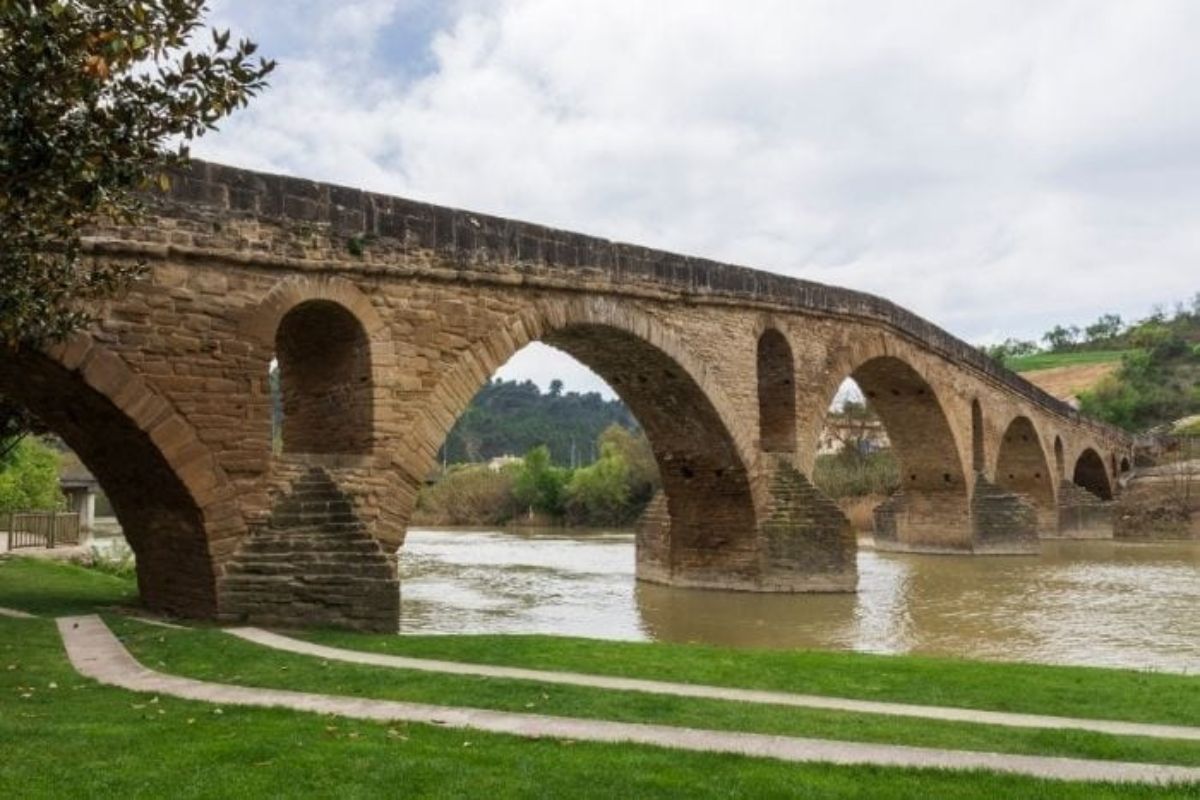
As the name suggests, the bridge of Puente La Reina is the highlight of this charming village
In Puente la Reina, the routes of the Camino de Santiago from Roncesvalles and Somport intersect. At this junction is the pilgrim monument, a sculpture over two meters tall. The inscription at its base reads: “And from here all the paths become one.” This monument, one of the famous sculptures on the Camino, is an emblem of the village and has witnessed millions of pilgrims passing through.
The Romanesque bridge is the most characteristic monument of the village. Built in the 11th century, it has six semicircular arches and one submerged, measuring 110 meters long and 4 meters wide. In the center of the bridge was a defensive tower with an image of the Virgin of Puy, the village’s patron saint. This place is full of interesting legends.
The Plaza Mayor is the nerve center of Puente la Reina. Built in 1727, this arcaded square is one of the most beautiful in Navarre. Also noteworthy are the Romanesque Church of Santiago and the Church of the Crucifix, linked to the Templars, which houses a large crucifix full of legend. It is one of the best works of Gothic imagery in Spain.
Santo Domingo de la Calzada
Santo Domingo de la Calzada is a medieval city located on the banks of the Oja River. It was founded by Santo Domingo, who built a bridge, a pilgrims’ hospital, and an inn. The city has great historical importance due to the pilgrimages of the Camino de Santiago.
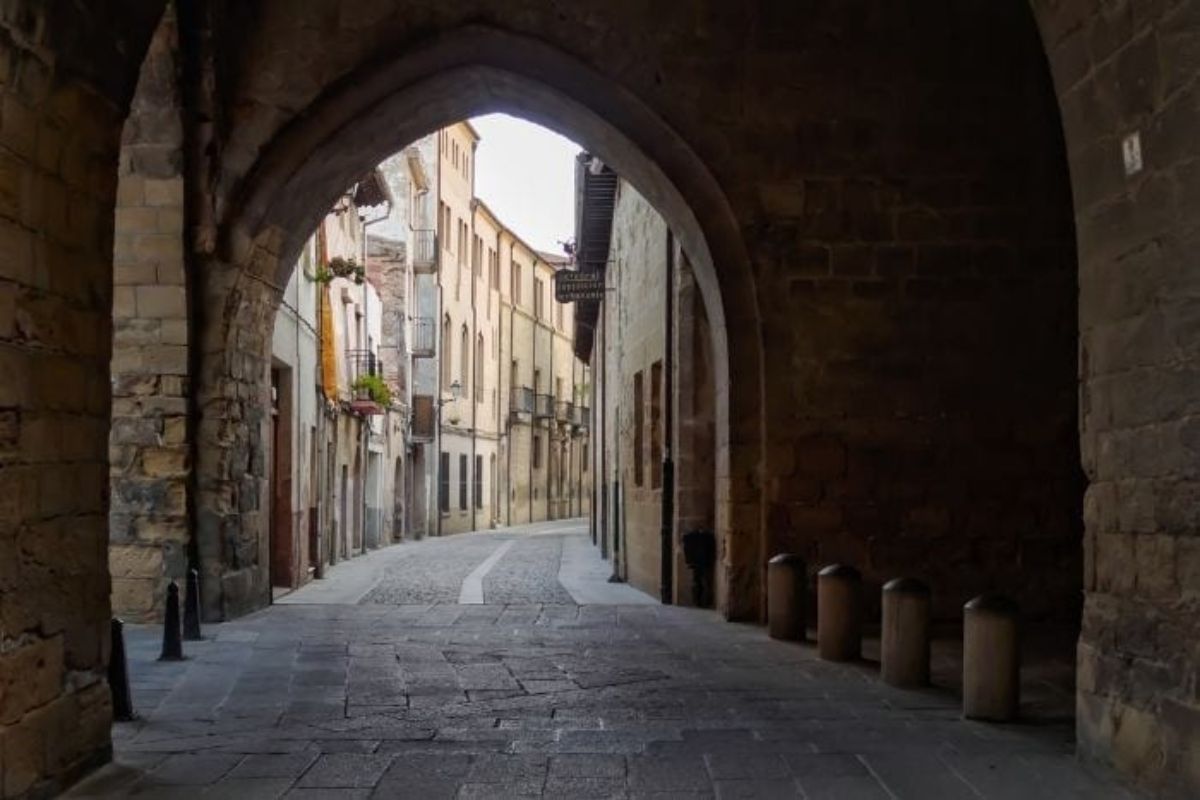
Walking through Santo Domingo de la Calzada will transport you to the Middle Ages
First, we must highlight the miracle of the rooster and the hen, a famous legend of the Camino de Santiago. A German couple and their son Hugonell are on a pilgrimage to Compostela. In Santo Domingo, they stay at an inn. Upon leaving, the young man is accused of theft and sentenced to hang. The next day, his parents find Hugonell alive. He tells them that Santo Domingo de la Calzada saved him. The parents inform the magistrate, who skeptically compares the young man’s life to a roasted rooster and hen. Miraculously, the birds come back to life, confirming the miracle.
In the Plaza del Santo, the majestic Cathedral of Santo Domingo stands out. Built in 1158 to house the remains of Santo Domingo, it combines Romanesque, Baroque, and Renaissance elements. Also present is the old Pilgrims’ Hospital, a testament to the importance of the Jacobean pilgrimage. Today, it is a National Parador that preserves its original 12th-century structure.
Astorga
Astorga, the capital of the Leonese region of Maragatería, offers a rich medieval heritage. Its location on the Camino Francés and the Vía de la Plata has influenced its development. The historic center of Astorga is surrounded by a Roman wall, built between the 3rd and 4th centuries. Today, about two kilometers of the perimeter are preserved, much of it reconstructed in the Middle Ages. The ancient gates no longer exist, but about thirty towers remain.
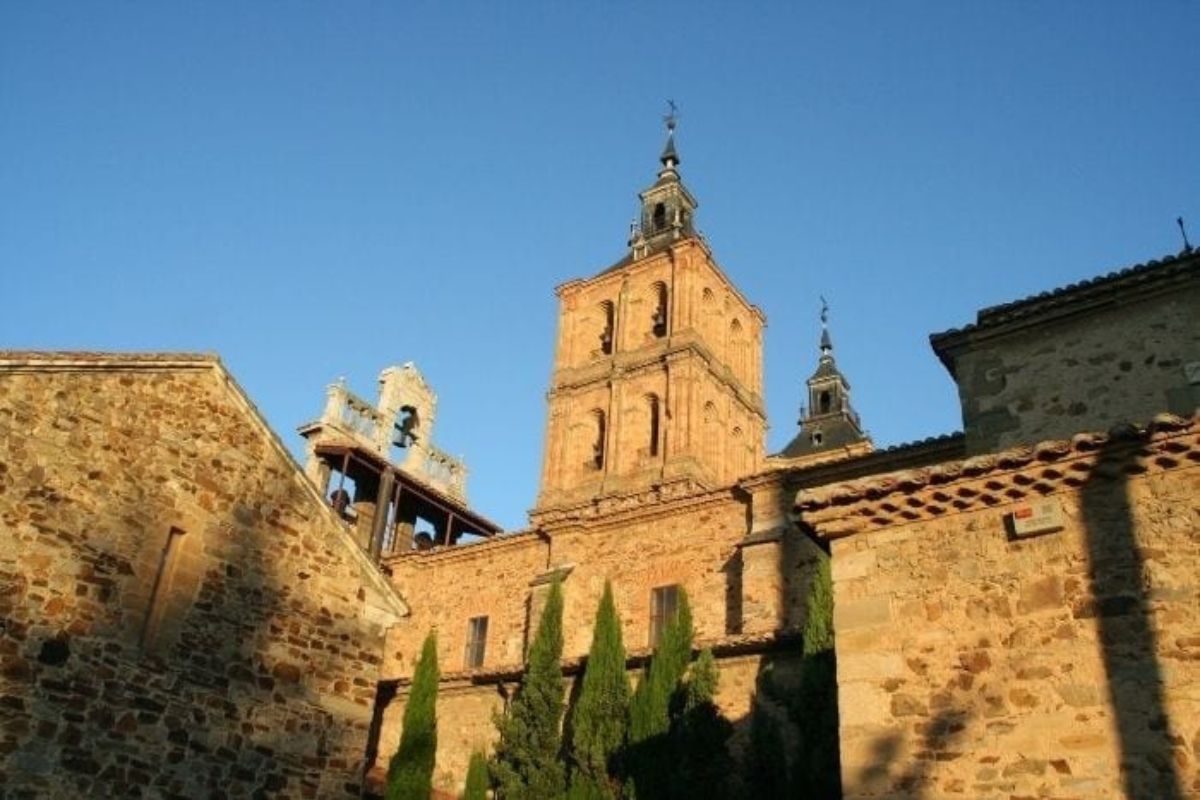
Astorga’s cathedral is one of the city’s notable monuments
The Plaza Mayor of Astorga, arcaded and square, houses the town hall building. The square and the buildings are from the 18th century, though underneath are remains of the Roman forum of Asturica Augusta. The Cathedral of Santa María is one of the city’s most recognized buildings, but perhaps the Episcopal Palace, designed by Gaudí, is the symbol of Astorga. After a fire in 1886, Gaudí designed the new building due to his friendship with the bishop. The palace blends elements of a medieval castle and a fairy-tale palace.
O Cebreiro
The village of O Cebreiro is in the region of Os Ancares Lucenses, a natural area declared a Biosphere Reserve. It is the first stop on the Camino Francés in Galicia and one of the most beautiful villages on the Camino de Santiago. O Cebreiro evokes times past with its cobblestone streets, traditional buildings, and Celtic atmosphere. The views of the green mountains of Os Ancares and O Caurel are spectacular. It is no surprise that it is considered one of the most beautiful villages in Galicia.
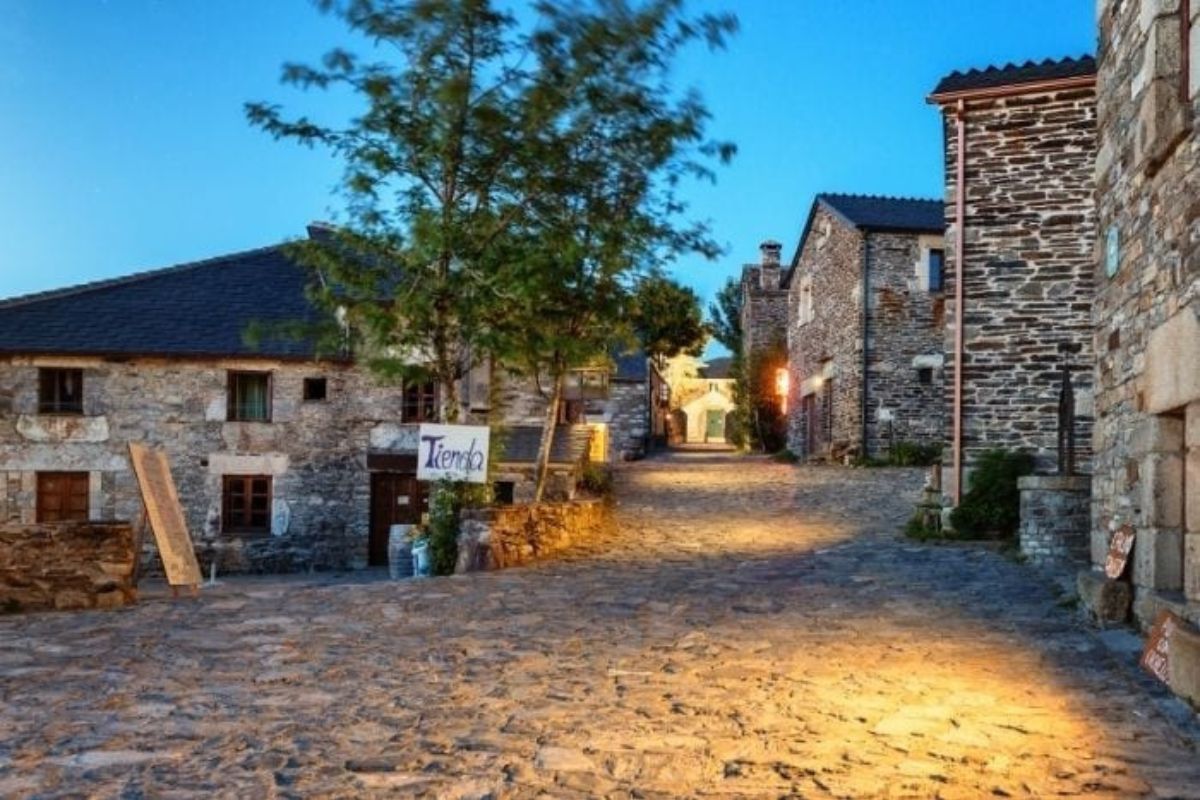
O Cebreiro village seems straight out of a fairy tale
The pallozas are the most characteristic feature of O Cebreiro. These traditional dwellings with thatched roofs withstand snow and winter winds. Inside, families and animals shared space to stay warm. In O Cebreiro, you can visit three pallozas: the palloza of Xan López, turned into an Ethnographic Museum, and those of Quicio and Galán.
The Church of Santa María la Real, from the 9th century and in a pre-Romanesque style, is the oldest church that remains intact on the Jacobean route. It houses a statue of Santa María la Real, a 12th-century baptismal font, a Romanesque chalice associated with a Eucharistic legend, and a reliquary donated by the Catholic Monarchs. Also located here is the tomb of the parish priest Elías Valiña, promoter of the Camino Francés.
The legend of the miracle of the Holy Grail of O Cebreiro spread throughout Europe. One winter, during a heavy snowfall, a neighbor climbed to attend Mass. The priest thought he risked his life just to kneel before bread and wine. During the consecration, the host turned into flesh and the wine into blood. The statue of the Virgin, on the main altar, knelt to adore the body and blood of the redeemer.
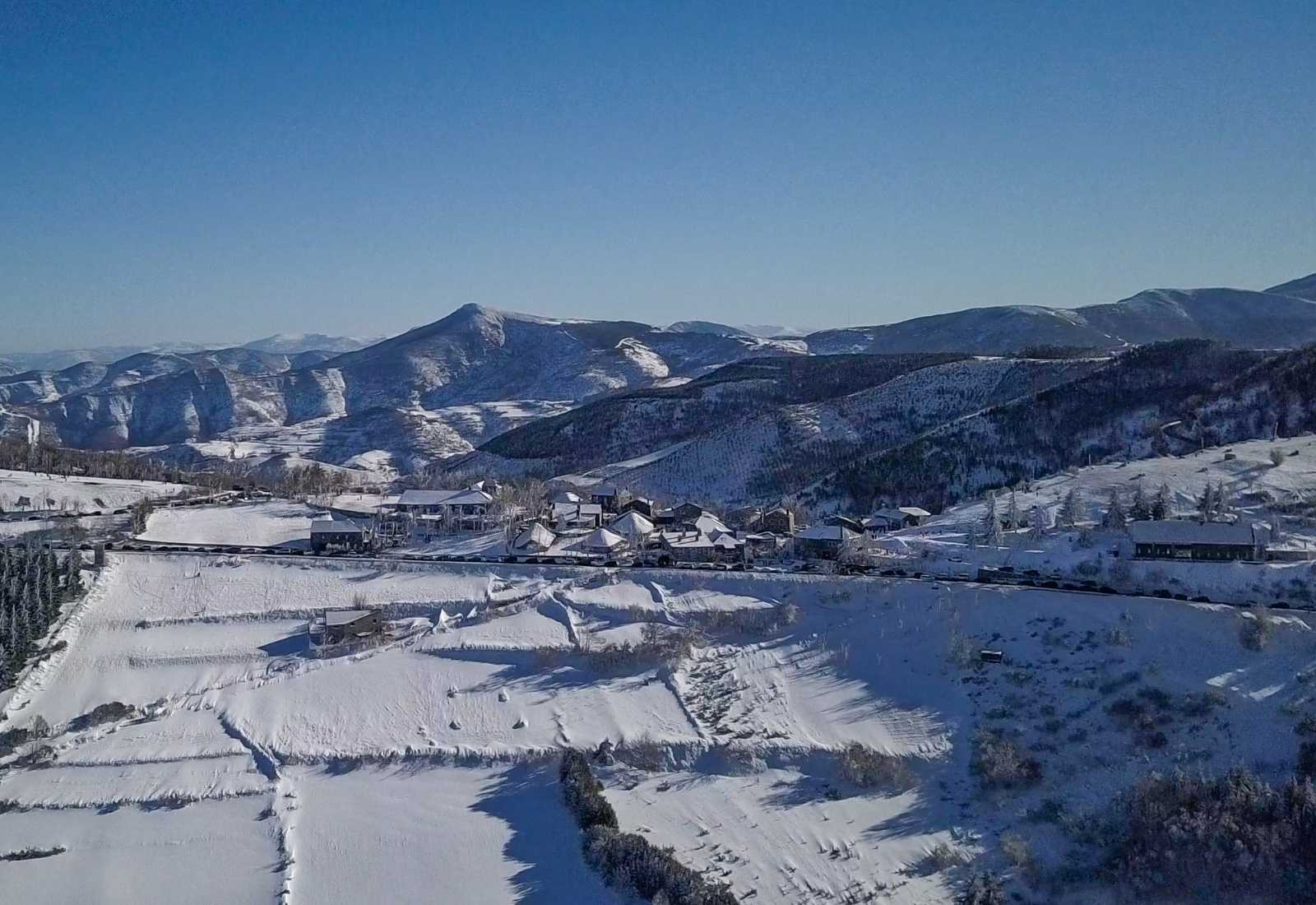
Snowy mountains in O Cebreiro, a dreamy scene
The miracle was known by the Catholic Monarchs, who went on pilgrimage to Santiago in 1486. They donated a reliquary that, along with the chalice, is displayed in the Church of Santa María do Cebreiro. The chalice, incorporated into the shield of Galicia, and the paten are famous Romanesque pieces. Tradition says that Queen Isabel wanted to take the relics of O Cebreiro with her. The royal entourage set off for Castile, but the horses stopped a few kilometers later and could not continue. The horses returned to the church doors. Queen Isabel, seeing this, ordered the relics to remain in O Cebreiro.
O Cebreiro is also famous for its snow due to its altitude. It is one of the snowiest places in Galicia. Families from all over Galicia visit the village to enjoy winter activities such as sledding and making snowmen. Seeing O Cebreiro covered in snow is a magical sight.
Other Beautiful Villages on the Camino de Santiago
Besides the French Way, the other routes of the Camino de Santiago also have beautiful villages.
Caldas de Reis
Caldas de Reis, on the Portuguese Way, is a small corner of Galicia famous for its thermal baths. The water, with healing properties, springs from the earth offering relief for the body and spirit. These waters are the most precious resource and driving force of Caldas de Reis. Don’t miss the chance to have an unforgettable experience by visiting one of its famous spas.
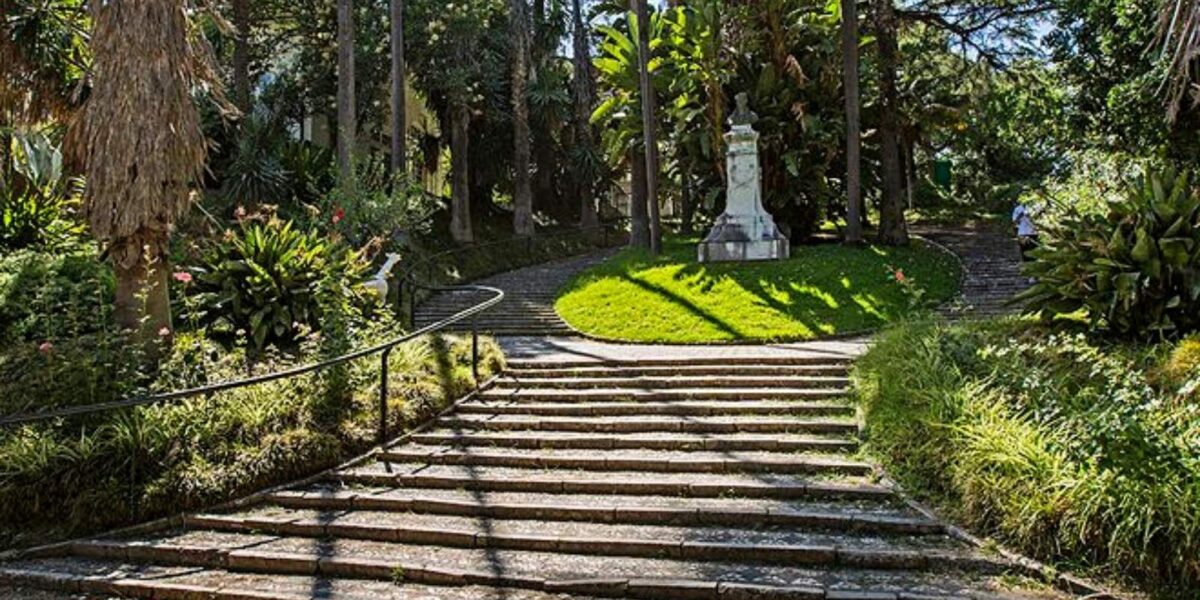
The Botanical Garden of Caldas de Reis offers walks in nature
The main monument is the Church of Santa María, built after the original was destroyed during the Almanzor period. Also noteworthy is the Botanical Garden, which houses various plant species from the five continents.
Betanzos
Betanzos, the former capital of the Kingdom of Galicia, welcomes pilgrims from all over the world on the English Way. Situated on a hill between the Mendo and Mandeo rivers, this elegant city offers history and tradition.
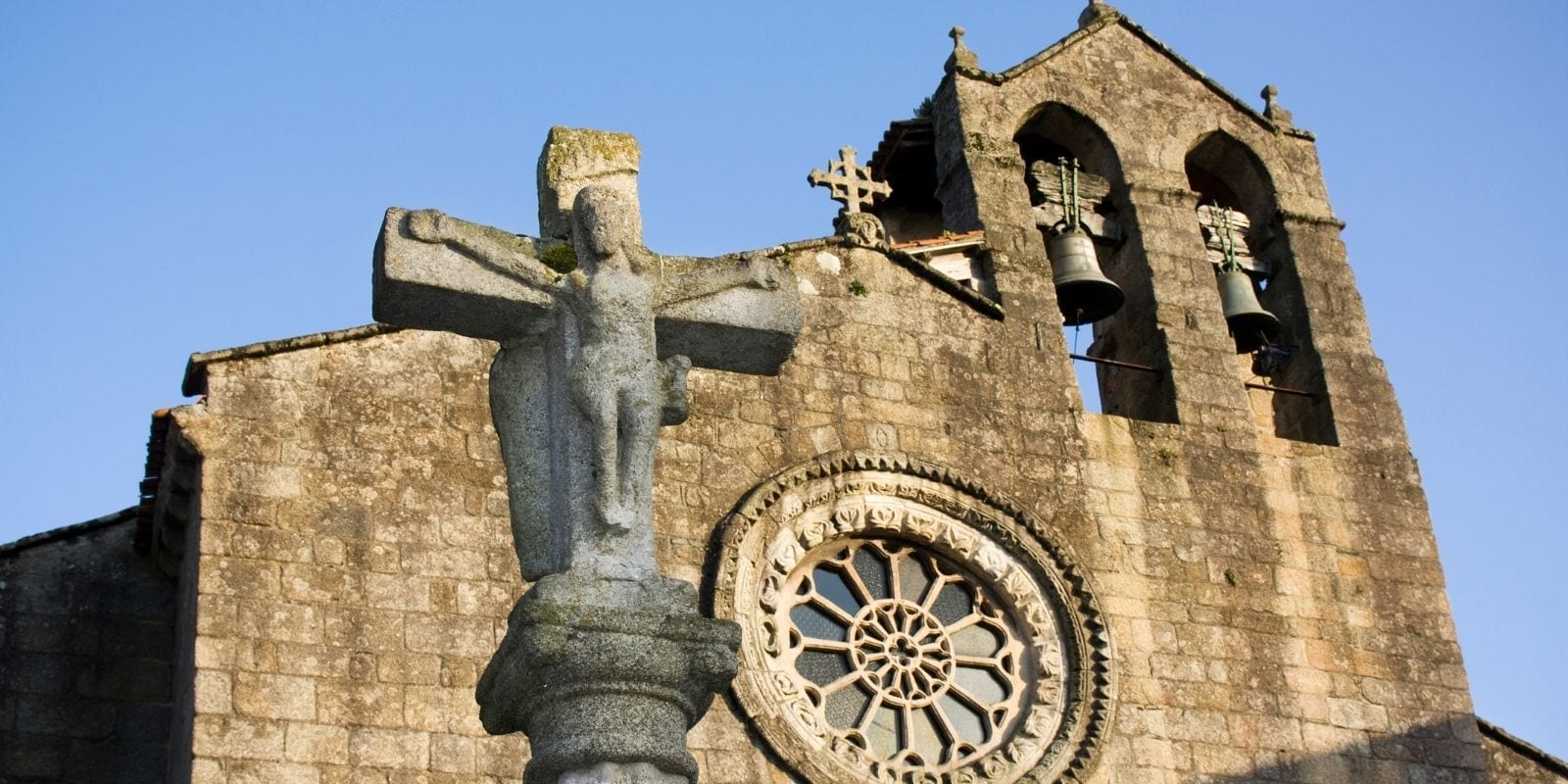
The Church of Santa María del Azogue holds many surprises
Declared a historic-artistic ensemble in 1970, the old town of Betanzos is one of the best-preserved in Galicia. The Gothic churches in this beautiful village stand out. The Church of Santa María de Azogue, built between the 14th and 15th centuries, has a basilica floor plan and three naves. Its altar retable and the capital with the only agricultural calendar in Galicia are noteworthy. The Church of San Francisco houses the tombs of medieval knights. The sarcophagus of Fernán Pérez de Andrade, supported by a bear and a wild boar, is particularly interesting.
We must also mention the Pasatiempo Park, the first theme park in the world, originally created by the local philanthropists and brothers García Naveira. Originally, it had 90,000 square meters, but today only a tenth of it is preserved. It includes Roman figures, the Tower of Hercules, and elements of mythology and the world.
Ribadesella
Ribadesella is an Asturian town with much history and tradition. It brings together three great features: the Cantabrian Sea, the Picos de Europa, and the Sella River. Founded by Alfonso X the Wise, it was one of the most important ports in Asturias in the 20th century. Today, it is a notable national tourist destination, making it a recommended stop on the Northern Way.
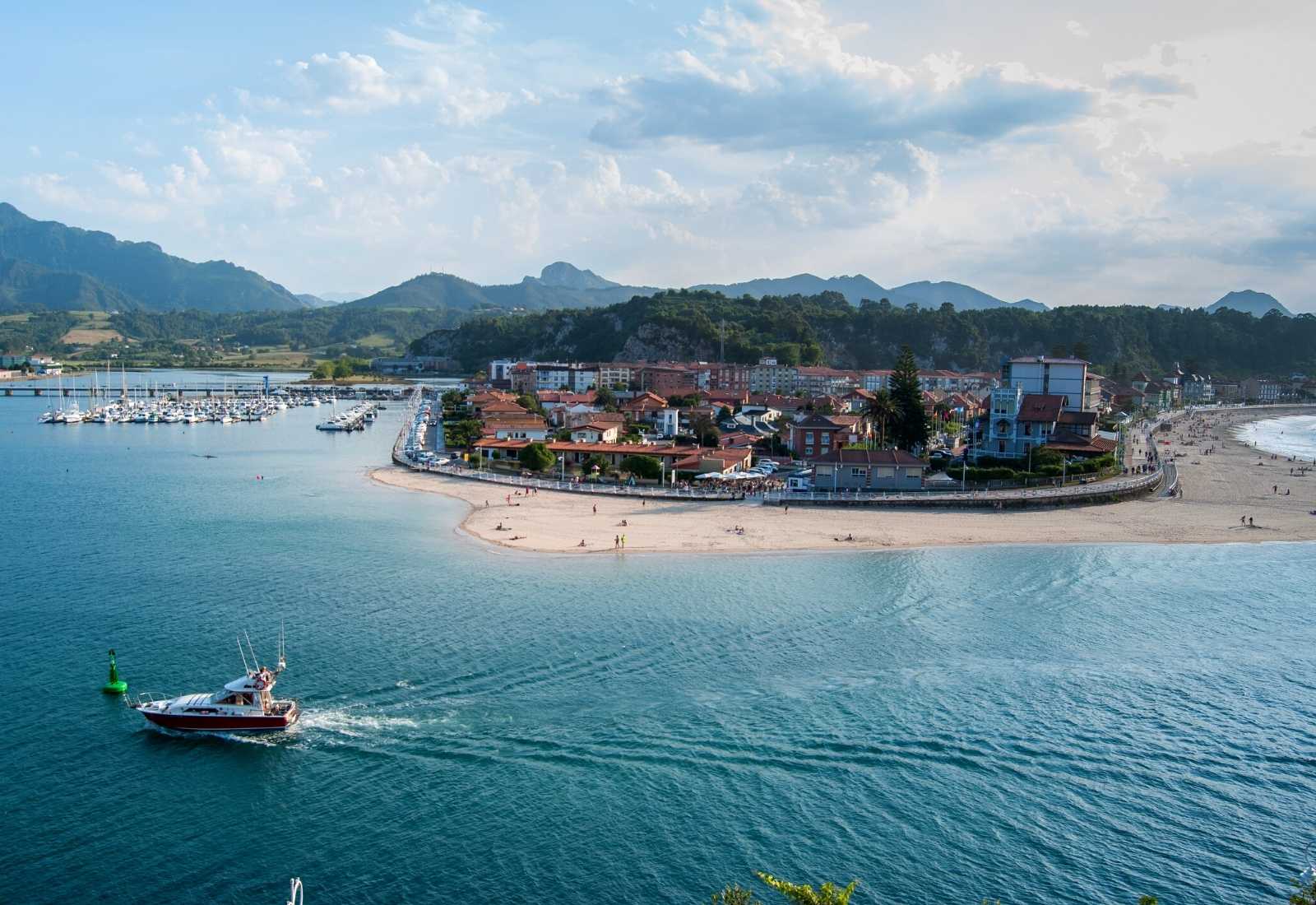
Ribadesella is a feast for the eyes
In the port, there is an open-air history museum created by cartoonist Mingote and writer Toni Silva. Through six murals designed by Mingote, important historical periods of Ribadesella are depicted. The ceramic work was done by Pachu Muñiz. The route is accessible and has information in braille and audio guides.
Declared a World Heritage Site by UNESCO in 2008, the Tito Bustillo Cave is one of the most important prehistoric art sanctuaries in the world. Its galleries and geological formations contain a site and Magdalenian paintings. In addition, at the Tereñes cliffs, you can find a series of dinosaur footprints.
Baiona
Baiona is a beautiful village known for being the first port in Europe to announce the Discovery of America. On March 1, 1493, the caravel La Pinta docked in Baiona, announcing the Discovery of America. A replica of the vessel, built for the Fifth Centenary, houses a small nautical museum with finds from the voyage.
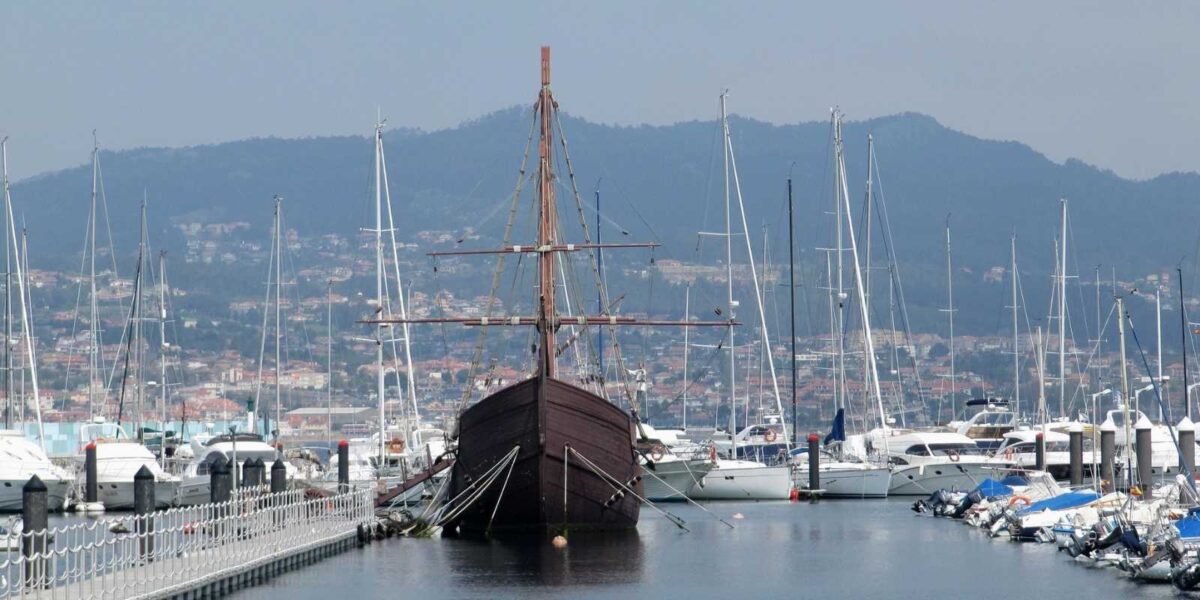
Replica of the Caravel Pinta
In addition to its old town, the Monterreal Castle, a walled enclosure from the 11th century, stands out for protecting the town from maritime attacks. Rebuilt in the 17th century, it offers spectacular views and houses the prestigious Parador de Turismo Conde de Gondomar. Besides its historical heritage, Baiona has small beaches and enviable views, which you can explore on the Portuguese Coastal Way. It is also a starting point to visit the Cíes Islands.
Estella
Estella is located between Pamplona and Logroño, in a transition zone between the Mountain and the Ribera. We return to the French Way as we cannot forget this beautiful monumental city. In the 15th century, it was known as “Estella la bella” and still lives up to that nickname. In its streets, you find palaces, churches, manor houses, convents, and beautiful buildings. The keep of the Castillo Mayor, the Palacio de los Reyes, the Church of San Pedro de la Rúa, or the Church of San Miguel are some examples.
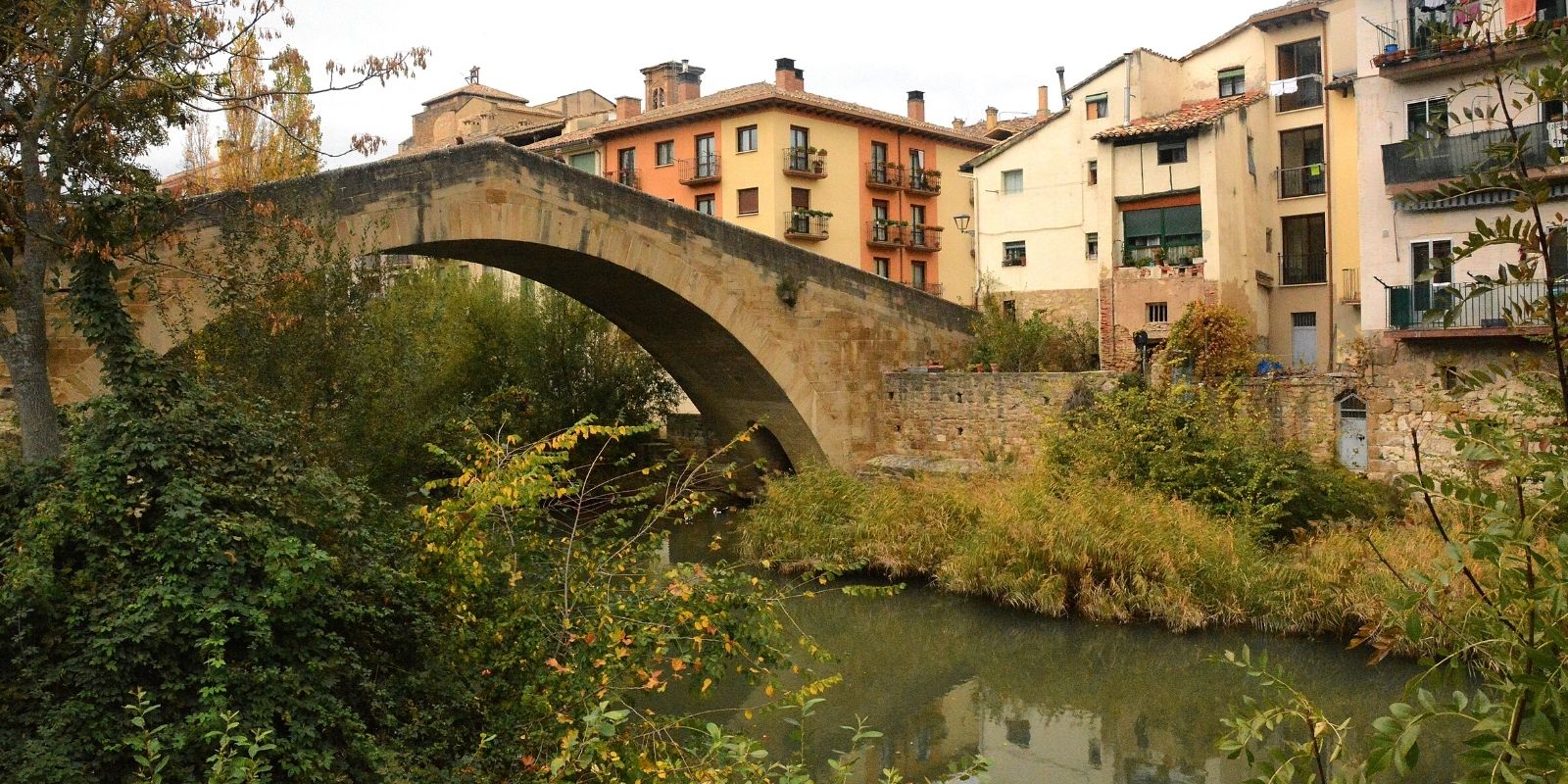
Among its many monuments, the Puente de la Cárcel stands out in Estella
Nearby, the Urbasa Natural Park presents landscapes of great value and is connected to Estella by two hiking routes. These routes allow you to know the historical heritage of Estella and the natural charm of Urbasa.
How to Plan Your Camino de Santiago
To properly plan your Camino, you must consider certain questions to enjoy it while discovering these beautiful villages.
Besides choosing a route that passes through some of these charming villages, you must consider when you will walk the Camino de Santiago. The best time to walk the Camino de Santiago is between spring and autumn. These seasons offer pleasant weather and fewer crowds than summer, although the summer period is the preferred time for most walkers.
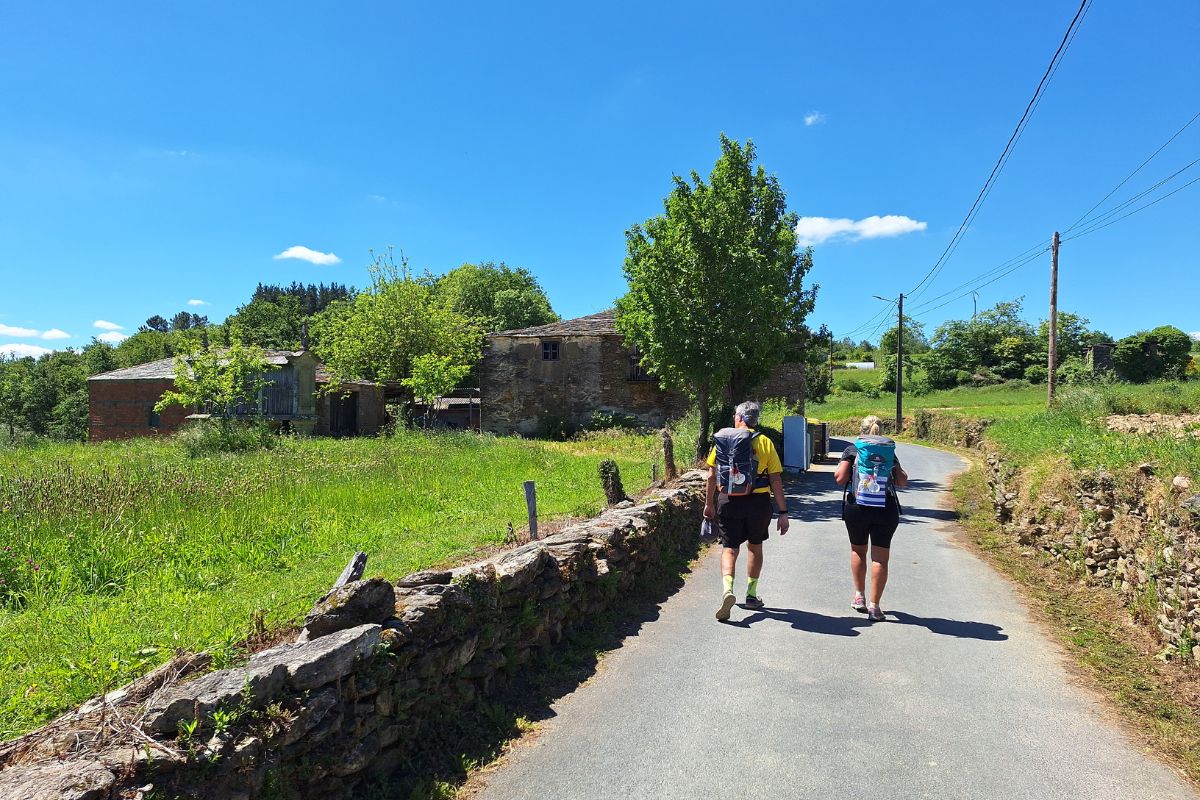
Beautiful villages and hamlets you will find on the Camino de Santiago
Depending on the time of year you walk the Camino, you should prepare your backpack accordingly and know what to bring. Of course, prior preparation and training are always recommended.
If you want to focus only on enjoying the journey, you can go to a specialized agency for organizing your Camino de Santiago. From booking accommodations, luggage transport, the best advice, and more, an agency like ours will provide you with the best pilgrim experience.
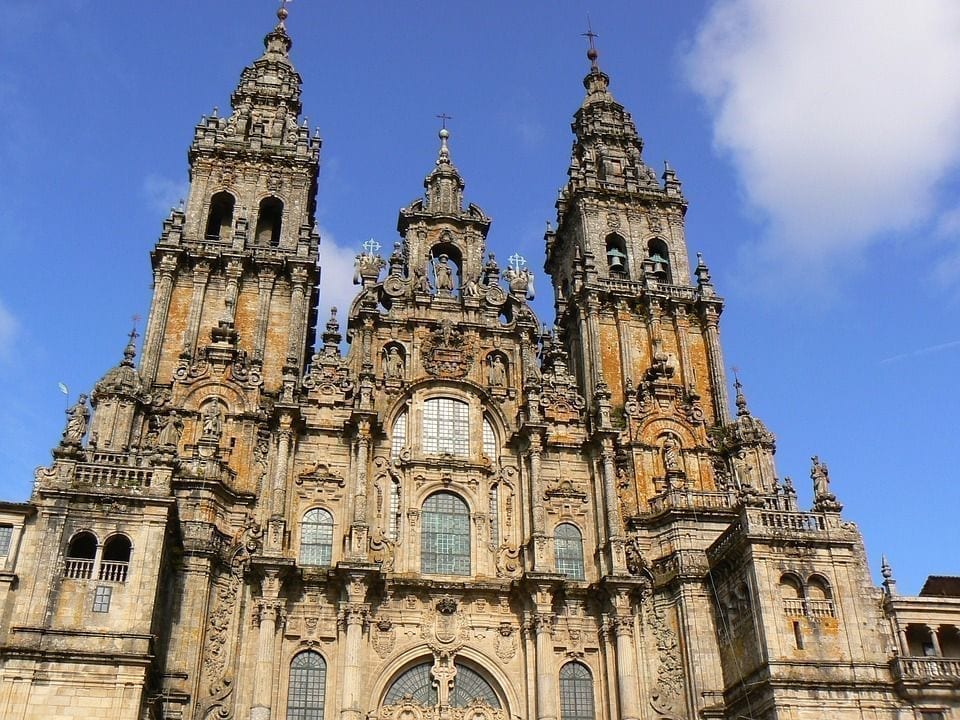
The final reward for your journey awaits you in Santiago de Compostela
The Camino de Santiago is more than a physical journey; it is a spiritual and cultural experience. It invites you to disconnect and reconnect with yourself while discovering charming villages and their rich history. Are you ready to live this adventure? The Camino de Santiago awaits you with open arms! Plan your trip and enjoy every step on this ancient route.

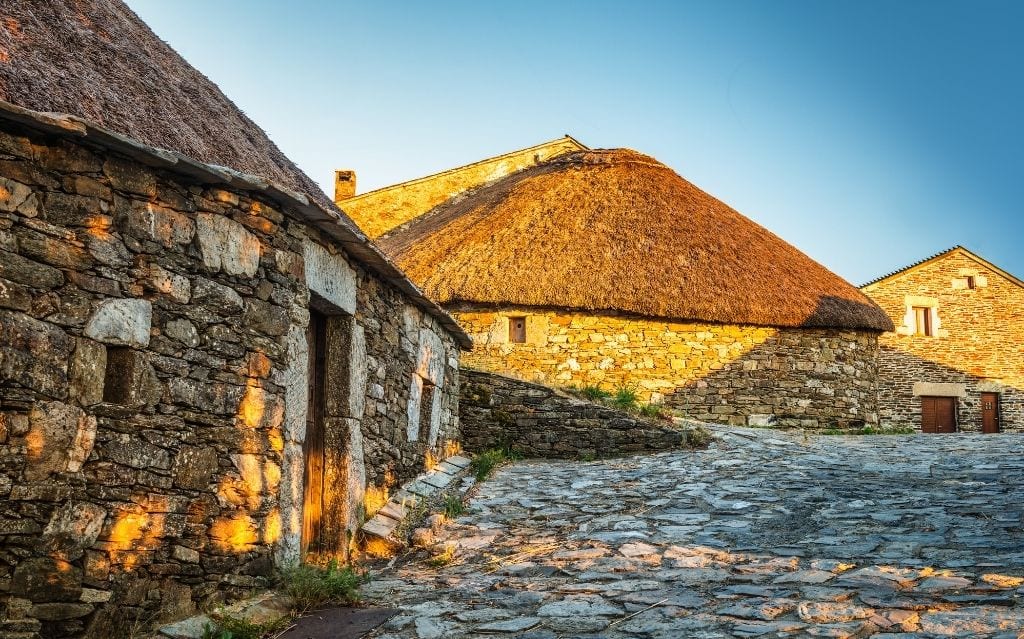










Leave A Comment